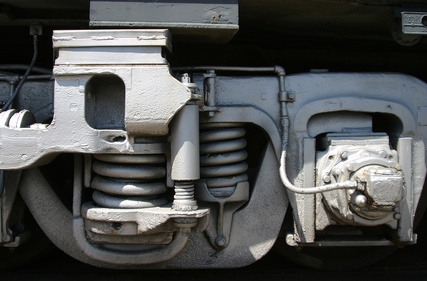
A car's suspension system consists of the various shock absorbers and springs that connect the chassis to the axles. Depending on the make and model of your car, the rear suspension may contain any number of specific parts that can wear-out or break.
Shock absorbers help dampen vertical motion; they help release the energy built up in the car's springs. Worn rear-shocks can cause fluid leakage, bottoming out, excessive bouncing after coming to a stop and "clunking" noises over bumps.
Some of the larger components of a car's suspension system are the struts; these support the chassis while absorbing both horizontal and vertical shock. Symptoms of a worn rear-strut include abnormal rear-tire wear, abnormal vibration from the rear, rear "clunking" noises, excessive bouncing over bumps and oil leakage.
The springs are contained with the struts, and also support the chassis. If a rear spring is worn or broken, your vehicle will noticeably sag towards the side of the bad spring. This often leads to handling problems and an uncomfortable ride.
Suspension bushings are essentially rubber discs that provide an extra layer of insulation from the bumps of the road. The most common signs of loose or worn rear bushings include excessive road noise and a rear "clunking" noise.